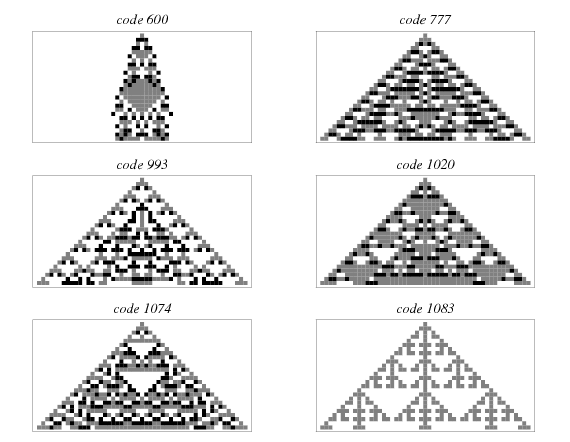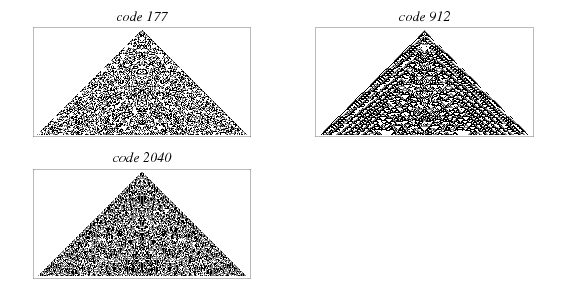

تاريخ الرياضيات

الاعداد و نظريتها

تاريخ التحليل

تار يخ الجبر

الهندسة و التبلوجي


الرياضيات في الحضارات المختلفة

العربية

اليونانية

البابلية

الصينية

المايا

المصرية

الهندية


الرياضيات المتقطعة

المنطق

اسس الرياضيات

فلسفة الرياضيات

مواضيع عامة في المنطق


الجبر

الجبر الخطي

الجبر المجرد

الجبر البولياني

مواضيع عامة في الجبر

الضبابية

نظرية المجموعات

نظرية الزمر

نظرية الحلقات والحقول

نظرية الاعداد

نظرية الفئات

حساب المتجهات

المتتاليات-المتسلسلات

المصفوفات و نظريتها

المثلثات


الهندسة

الهندسة المستوية

الهندسة غير المستوية

مواضيع عامة في الهندسة

التفاضل و التكامل


المعادلات التفاضلية و التكاملية

معادلات تفاضلية

معادلات تكاملية

مواضيع عامة في المعادلات


التحليل

التحليل العددي

التحليل العقدي

التحليل الدالي

مواضيع عامة في التحليل

التحليل الحقيقي

التبلوجيا

نظرية الالعاب

الاحتمالات و الاحصاء

نظرية التحكم

بحوث العمليات

نظرية الكم

الشفرات

الرياضيات التطبيقية

نظريات ومبرهنات


علماء الرياضيات

500AD

500-1499

1000to1499

1500to1599

1600to1649

1650to1699

1700to1749

1750to1779

1780to1799

1800to1819

1820to1829

1830to1839

1840to1849

1850to1859

1860to1864

1865to1869

1870to1874

1875to1879

1880to1884

1885to1889

1890to1894

1895to1899

1900to1904

1905to1909

1910to1914

1915to1919

1920to1924

1925to1929

1930to1939

1940to the present

علماء الرياضيات

الرياضيات في العلوم الاخرى

بحوث و اطاريح جامعية

هل تعلم

طرائق التدريس

الرياضيات العامة

نظرية البيان
Totalistic Cellular Automaton
المؤلف:
Rangel-Mondragon, J
المصدر:
"A Catalog of Cellular Automata." http://library.wolfram.com/infocenter/MathSource/505/.
الجزء والصفحة:
...
28-8-2021
4304
Totalistic Cellular Automaton

A totalistic cellular automaton is a cellular automata in which the rules depend only on the total (or equivalently, the average) of the values of the cells in a neighborhood. These automata were introduced by Wolfram in 1983. Like an elementary cellular automaton, the evolution of a one-dimensional totalistic cellular automaton can completely be described by a table specifying the state a given cell will have in the next generation based on the average value of the three cells consisting of the cell to its left, the value the cell itself, and the value of the cell to its right.
For a  -color one-dimensional totalistic automaton, there are
-color one-dimensional totalistic automaton, there are  possible states for the average of three cells neighboring a given cell, and a total of
possible states for the average of three cells neighboring a given cell, and a total of 
 -color totalistic cellular automata, each of which can be indexed with an
-color totalistic cellular automata, each of which can be indexed with an  -digit
-digit  -ary number, known as a "code." For example, the table giving the evolution of the 3-color code
-ary number, known as a "code." For example, the table giving the evolution of the 3-color code  is illustrated above. In this diagram, the possible average values of the three neighboring cells are shown in the top row of each panel, and the resulting value the central cell takes in the next generation is shown below in the center.
is illustrated above. In this diagram, the possible average values of the three neighboring cells are shown in the top row of each panel, and the resulting value the central cell takes in the next generation is shown below in the center.  generations of the totalistic cellular automaton code
generations of the totalistic cellular automaton code  with
with  colors is implemented in as CellularAutomaton[
colors is implemented in as CellularAutomaton[{" src="https://mathworld.wolfram.com/images/equations/TotalisticCellularAutomaton/Inline11.gif" style="height:15px; width:5px" />r,
{" src="https://mathworld.wolfram.com/images/equations/TotalisticCellularAutomaton/Inline12.gif" style="height:15px; width:5px" />3, 1
}" src="https://mathworld.wolfram.com/images/equations/TotalisticCellularAutomaton/Inline13.gif" style="height:15px; width:5px" />
}" src="https://mathworld.wolfram.com/images/equations/TotalisticCellularAutomaton/Inline14.gif" style="height:15px; width:5px" />,
{" src="https://mathworld.wolfram.com/images/equations/TotalisticCellularAutomaton/Inline15.gif" style="height:15px; width:5px" />
{" src="https://mathworld.wolfram.com/images/equations/TotalisticCellularAutomaton/Inline16.gif" style="height:15px; width:5px" />1
}" src="https://mathworld.wolfram.com/images/equations/TotalisticCellularAutomaton/Inline17.gif" style="height:15px; width:5px" />, 0
}" src="https://mathworld.wolfram.com/images/equations/TotalisticCellularAutomaton/Inline18.gif" style="height:15px; width:5px" />, n,
{" src="https://mathworld.wolfram.com/images/equations/TotalisticCellularAutomaton/Inline19.gif" style="height:15px; width:5px" />All, All
}" src="https://mathworld.wolfram.com/images/equations/TotalisticCellularAutomaton/Inline20.gif" style="height:15px; width:5px" />].

The evolution of a one-dimensional cellular automaton can be illustrated by starting with the initial state (generation zero) in the first row, the first generation on the second row, and so on. For example, the figures above illustrate the first 20 generations of the code 777 3-color totalistic cellular automaton starting with a single gray cell (left figure) and a single black cell (right figure).


The illustrations above show automata numbers 600, 777, 993, 1020, 1074, and 1083 propagated for 25 generations.

The illustrations above show one-dimensional automata that display apparently random features.
The best known two-dimensional totalistic cellular automaton is the game of life.
REFERENCES:
Rangel-Mondragon, J. "A Catalog of Cellular Automata." http://library.wolfram.com/infocenter/MathSource/505/.
Wolfram, S. "Statistical Mechanics of Cellular Automata." Rev. Mod. Phys. 55, 601-644, 1983.
Wolfram, S. "Universality and Complexity in Cellular Automata." Physica D 10, 1-35, 1984.
Wolfram, S. "Twenty Problems in the Theory of Cellular Automata." Physica Scripta T9, 170-183, 1985.
Wolfram, S. A New Kind of Science. Champaign, IL: Wolfram Media, pp. 60-70 and 886, 2002.
 الاكثر قراءة في الرياضيات التطبيقية
الاكثر قراءة في الرياضيات التطبيقية
 اخر الاخبار
اخر الاخبار
اخبار العتبة العباسية المقدسة

الآخبار الصحية















 قسم الشؤون الفكرية يصدر كتاباً يوثق تاريخ السدانة في العتبة العباسية المقدسة
قسم الشؤون الفكرية يصدر كتاباً يوثق تاريخ السدانة في العتبة العباسية المقدسة "المهمة".. إصدار قصصي يوثّق القصص الفائزة في مسابقة فتوى الدفاع المقدسة للقصة القصيرة
"المهمة".. إصدار قصصي يوثّق القصص الفائزة في مسابقة فتوى الدفاع المقدسة للقصة القصيرة (نوافذ).. إصدار أدبي يوثق القصص الفائزة في مسابقة الإمام العسكري (عليه السلام)
(نوافذ).. إصدار أدبي يوثق القصص الفائزة في مسابقة الإمام العسكري (عليه السلام)


















